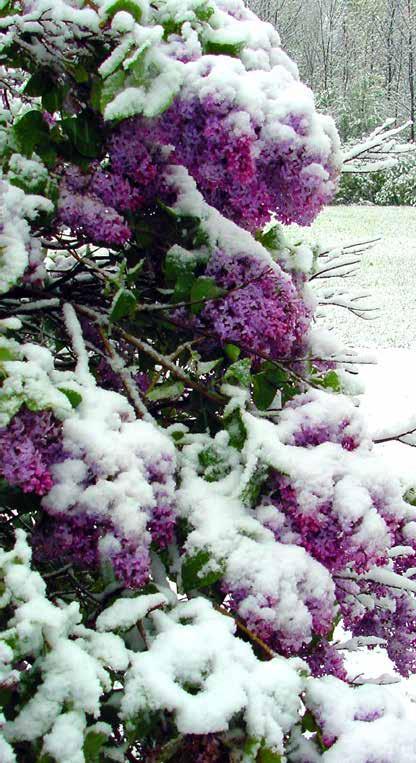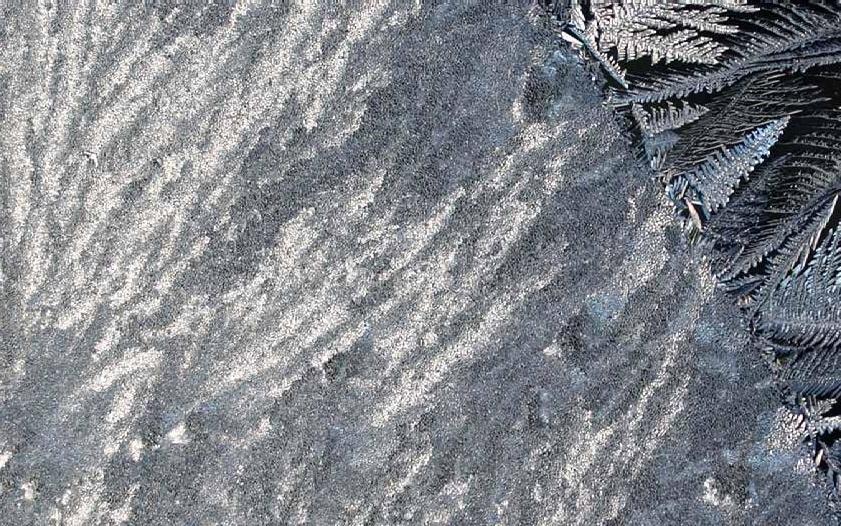
4 minute read
Gardening with Peter Bowden

Gardening
WITH PETER BOWDEN
WRITTEN AND PHOTOGRAPHED BY PETER BOWDEN
It Could be Worse… We all find ways to get through winter but can you imagine if winter continued right on through summer? That is exactly what happened in 1816; a year that produced snow and frost in June, frost in July and another killing frost in August. 1816 was known as “The Year There Was No Summer” and “Eighteen Hundred and Froze to Death”. The freak winter was caused by a volcano called Tambora that explosively erupted in Indonesia in April of 1815. The size and violence of this eruption forced an estimated 100 CUBIC MILES of dust, ash and sulfuric acid into the stratosphere. Let’s take a look at what they endured. The winter of 1815-1816 was a cold one that started early and lingered late. This was not uncommon and these northern farmers had endured many long winters and late spring cold. April and May were cold but farmers managed to get their crops planted. By early June, the leaves were out on the trees, the corn was up and vegetable gardens were in and growing. Then things began to go terribly wrong. On June 5th in Williamstown, Mass., the temperature was a balmy 83 degrees, warm for that early in the season. By the next morning, the temperature was 45 degrees and still falling. From Canada to Virginia cold arctic air caused killing frosts to occur June 6th, through the 9th. Thousands of birds that had recently migrated into the area from the south froze to death. Sheep, recently shorn, froze to death even though they were brought inside. Farmers built bonfires around their fields to save the crops but all to no avail. The leaves on all the trees froze, blackened and fell to the ground. There was snow in New York and New England on June 6th, 7th and 8th as far south as the Catskills.

In Danville, Vermont the newspaper reports: “On the night of the 7th and morning of the 8th a kind of sleet or exceedingly cold snow fell, attended by high wind, and measured in places where it drifted, 18 to 20 inches in depth. Saturday morning (8th of June) the weather was more severe than it generally is in the winter.” Standing water froze as far south as Philadelphia and in northern Vermont the ice was an inch thick. Even the ground started to freeze! By the 12th of June, the outbreak of cold ended. The hard work of planting was repeated. Farmers knew that, in spite of the late start, they still had enough time to get a decent crop of corn and beans and such….if the weather cooperated for the rest of the season. For four weeks the weather held. Their second planting was growing well. Folks felt a bit foolish about their earlier fears and chalked it up to their renowned New England weather. Their good cheer was not to last. At the end of the first week in July another, although less severe, outbreak of arctic air spilled over New England and eastern New York. All the crops in the valleys (where most of the farms were) were again killed or badly damaged. Most felt that a widespread famine was inevitable. Those who could procure seed again replanted and everyone prayed. It seemed that God himself had turned against them. After the first week of July, things returned to normal for a few more weeks. In addition to the cold in 1816, it was a dry year as well. Farmers were optimistic that, if they got a break in September, things would be all right. Alas, another killing frost on August 20th visited much of New England and New York as far south as East Windsor, Conn. From Albany to Boston the crops succumbed. What little survived was finished off by an even colder spell during the last week of the month. As if that weren’t enough, temperatures dipped below freezing again September 11th and 12th. A more widespread frost at the end of September dashed any hope for crops that had managed to escape until then. The winter of 1816-1817 was indeed a winter of despair. Many tried to survive on milk and bread but bread was in short supply. It was a blessing that the ocean off New England’s coast was so bountiful. The task of feeding New England fell to the fishermen. Many landlubbers who had never eaten fish became very familiar with the taste of mackerel during 1817. When the snow and the cold get you down remember, it could be a lot worse. We may be sick and tired of winter weather but it’s nothing when compared to the trials the weather of 1816 put our ancestors through. Thanks for the read.

SS











